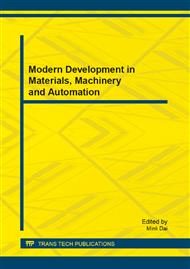p.123
p.129
p.135
p.141
p.145
p.151
p.157
p.163
p.169
The Research of Clock Traffic Congestion Model and Synchronization Technology
Abstract:
Considering the limited bandwidth, delay and the flow of mutual association, the greater the flow, the delay lags the more obvious; when flow close to saturation, delay will become very serious. According to the PTP local clock offset correction mechanism; this paper proposed an adaptive routing algorithm based on through node flow congestion forecast message. The method based on least squares support vector machine on the discharge time series online regression estimate future period of time clock node network flow value, from this investigation clock node congestion degree index, so the choice of adaptability PTP since the minimum delay routing, improve the synchronous message delivery success rate, reduce the complex network of synchronous accuracy vulnerable data flow congestion hysteresis effect.
Info:
Periodical:
Pages:
145-148
Citation:
Online since:
August 2013
Authors:
Price:
Сopyright:
© 2013 Trans Tech Publications Ltd. All Rights Reserved
Share:
Citation:


